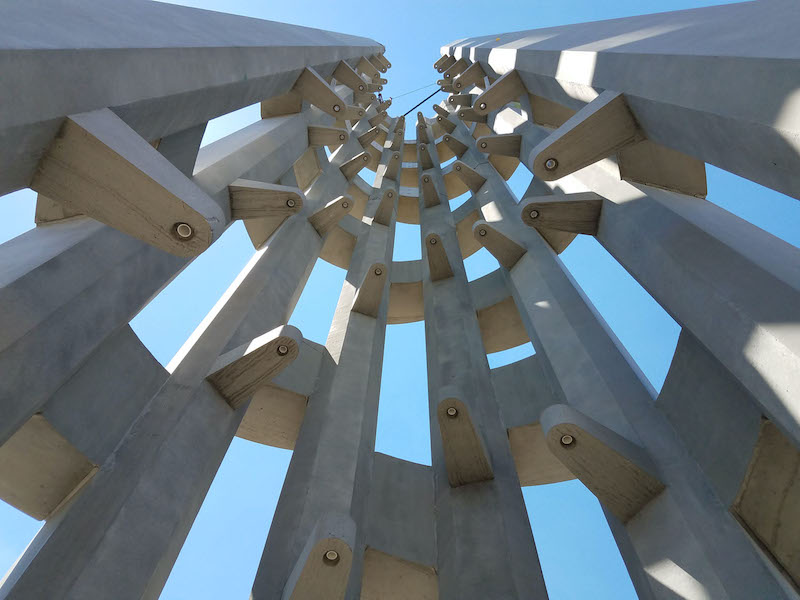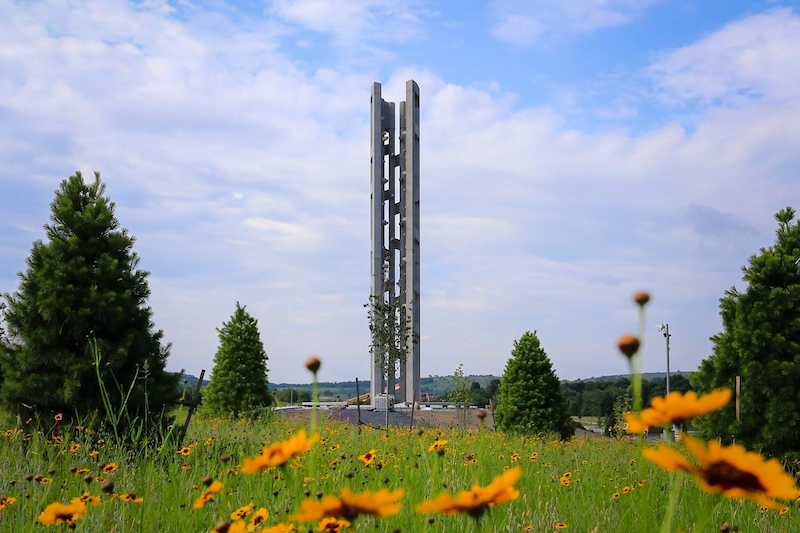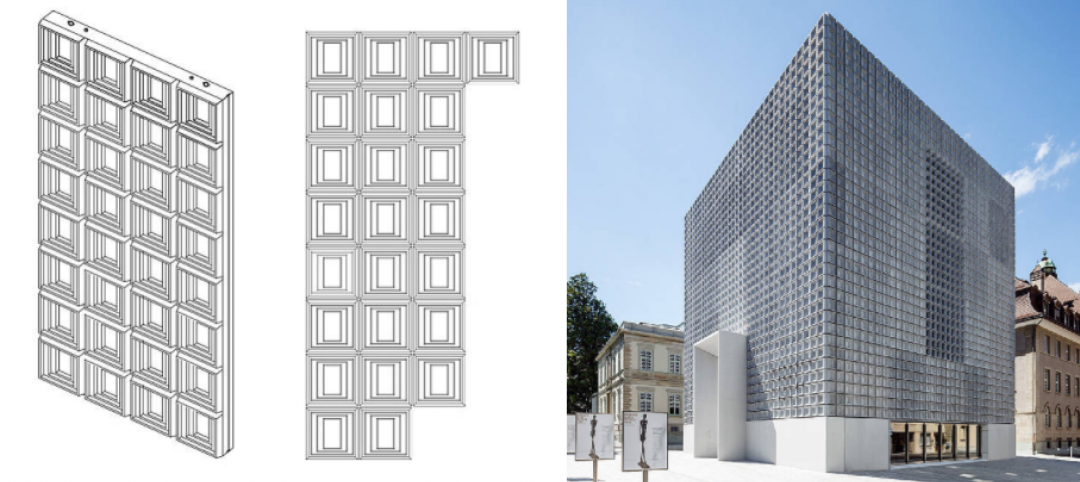The Tower of Voices, part of the last major phase of work at the Flight 93 National Memorial located in Somerset County, Penn., where United Flight 93 crashed on Sept. 11, 2001, is conceived as both a musical instrument and a tower.
The 93-foot-tall precast tower comprises 40 custom-made aluminum wind chimes, with each chime producing a distinct musical note. Together, these chimes create a set of “40 voices” to memorialize the 40 passengers and crew who lost their lives when the flight was hijacked by terrorists. The chimes are suspended at variable heights, starting 20 feet above the main plaza and ascending to the top. The customizable features included in the precast concrete will enable the chimes to “sing” even at low wind speeds.
The tower form is designed as an enclosure that cradles the 40 chimes and opens towards the public plaza on which it stands. The precast concrete columns with branch connectors abstractly recall the Hemlock grove near the crash site. Precast concrete was used for the tower to accommodate the complex and unusual shapes of each component and because it had the strength needed to support the tall, slender frame.

The design process included a combination of consultants including a musician, chimes artist, acoustical engineer, and wind consultants. Diagonal column splices allowed the joints to blend in with diagonal beams. At the joints, pockets and splines aligned the column pairs vertically, creating symmetry in a structure with various angles, curves, and heights.
The project acts as a landmark memorial feature near the entrance of the park.
Related Stories
| Aug 11, 2010
AIA Course: Building with concrete – Design and construction techniques
Concrete maintains a special reputation for strength, durability, flexibility, and sustainability. These associations and a host of other factors have made it one of the most widely used building materials globally in just one century. Take this free AIA/CES course from Building Design+Construction and earn 1.0 AIA learning unit.
| Aug 11, 2010
AIA Course: Historic Masonry — Restoration and Renovation
Historic restoration and preservation efforts are accelerating throughout the U.S., thanks in part to available tax credits, awards programs, and green building trends. While these projects entail many different building components and systems, façade restoration—as the public face of these older structures—is a key focus. Earn 1.0 AIA learning unit by taking this free course from Building Design+Construction.
| Aug 11, 2010
Tall ICF Walls: 9 Building Tips from the Experts
Insulating concrete forms have a long history of success in low-rise buildings, but now Building Teams are specifying ICFs for mid- and high-rise structures—more than 100 feet. ICF walls can be used for tall unsupported walls (for, say, movie theaters and big-box stores) and for multistory, load-bearing walls (for hotels, multifamily residential buildings, and student residence halls).
Concrete | Aug 11, 2010
8 Innovations That Will Rock Your Next Concrete Project
If you think you've seen it all when it comes to concrete construction, then you haven't sat down with Blaine Brownell. The architect-turned-blogger-turned-author has become the industry's foremost expert in everything that is unconventional and provocative in the building products field. For the past eight years, this LEED Accredited Professional, BD+C “40 Under 40” winner, and vis...
| Aug 11, 2010
Great Solutions: Products
14. Mod Pod A Nod to Flex Biz Designed by the British firm Tate + Hindle, the OfficePOD is a flexible office space that can be installed, well, just about anywhere, indoors or out. The self-contained modular units measure about seven feet square and are designed to serve as dedicated space for employees who work from home or other remote locations.









